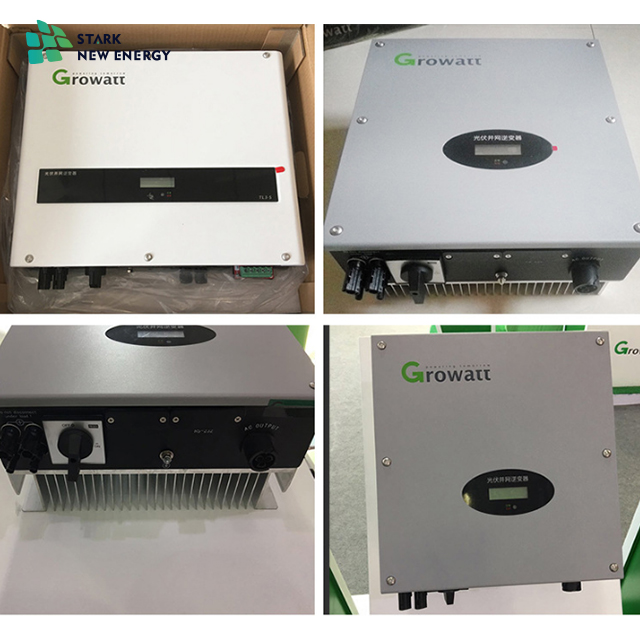Unlike portable electronic products which used disposable dry batteries or alkaline batteries as power sources in the past, no matter whether it is a laptop, mobile phone or MP3 / MP4 player, lithium-ion, nickel-cadmium or nickel-hydrogen rechargeable batteries are basically used. The cost of use is conducive to environmental protection, and more importantly, the battery capacity can be made larger to obtain a longer battery life. Rechargeable batteries also put forward new requirements for system developers due to their own characteristics. In order to make rechargeable batteries have a longer service life, correct charging circuit design and device selection are essential, whether it is an external charger or a system The internal charging power management schemes need to be considered in detail according to the specific use situation.
Single-chip charging management solution may become mainstream
In portable products, battery charging can usually be done in two ways, one is to use the system's own main control MCU plus a pulse width modulation and demodulation unit (PWM) to achieve, the other is to use a highly integrated single-chip charge management IC . "The biggest advantage of the single-chip charge management IC is that it has higher reliability, and the MCU + PWM scheme is cheaper and simpler." Fujitsu Microelectronics Marketing Manager Wang Yun explained in an interview with this reporter, "System Manufacturing Vendors can compare the pros and cons of the two solutions in terms of cost and reliability, and choose the most suitable solution. In the long run, as the cost of single-chip charge management ICs declines and external communication functions increase, more It will become a trend to choose a more reliable single chip in applications. "
According to Wang Yun, Fujitsu's charging management products are mainly positioned in the market above 2Cell, and the largest market in the application of 2 ~ 4Cell belongs to notebook computers. Since 15 years ago, Fujitsu ’s power management R & D team has cooperated with Fujitsu ’s notebook computer R & D department to develop a charge management IC for notebook computers. Through the continuous development and improvement of several generations of products, the newly developed lithium battery charge management ICs MB39A132 and MB39A134 have been applied in many large factories in Taiwan and mainland China, and have also received the attention of the netbook market that has recently attracted attention. "In the application of notebook computers, due to the explosion of rechargeable batteries one after another several years ago, notebook design manufacturers have paid more and more attention to the design of the charging part. In the charging management part, large-scale power management with stable quality and high reliability will be used. IC. "He said.
However, Dr. Wu Xin, AC / DC product director from BCD Semiconductor, is more optimistic about the MCU + PWM scheme. He believes that the control scheme circuit formed by the dedicated charge management IC is simple but has a single function, and can usually only be performed on lithium-ion batteries with specific parameters Charging, and different types of portable products often use different types of lithium-ion batteries, if you use a dedicated chip, it will cause repeated development and waste of resources.
"The Buck circuit realized by MCU + PWM has low cost and flexible control method, can be easily improved and upgraded, and can be applied to various lithium-ion batteries." Wu Xin said.
BCD Semiconductor is an analog signal integrated circuit manufacturer (IDM) located in Greater China, engaged in the design, development and manufacture of power management integrated circuit products. Unlike other Fabless design companies on the market, BCD Semiconductor has a 6-inch fab
(Including production processes such as Bipolar, CMOS, BiCMOS and BCDMOS), product performance and cost can be optimized through product design and integration of advanced process technologies to provide cost-effective application system solutions.
In fact, the focus of BCD Semiconductor is on the high-efficiency and low-cost AC / DC offline power adapter / charger control chip. The first-generation primary-side controller AP370x series developed by the company in 2006 is the earliest product on the market. one. According to reports, AP370x adopts the primary side control and output cable compensation patent technology, built-in temperature compensation and transformer primary side inductance compensation, which can achieve high-precision output voltage and current control without the need for optocouplers and secondary feedback control circuits. This greatly reduces the number of components in the power circuit and simplifies the circuit design. It has been successfully applied to chargers / adapters for mobile phones, wireless public telephones, cordless phones, and wireless routers. "In order to further improve power conversion efficiency and reduce standby energy consumption, we further introduced the second-generation primary-side controller AP376x series that meets the five-star standard in the industry. Its no-load power consumption of less than 30mW can easily meet energy consumption. Star Energy EPS v2.0 and five-star mobile phone charger standards include the energy efficiency and no-load specifications of all chargers / adapters in the world. "Wu Xin said.
Increasingly diverse input power
With the increasing diversification of people's living environment, the power sources that can be used for battery charging are becoming more and more diversified. In addition to the traditional 220V AC adapter, users also hope to be able to charge the batteries of various devices through the USB interface or car power supply at any time. In addition, users demand that they can continue to use their functions while the device is charging, so the device's charging management circuit needs more flexibility to adapt to a wider range of application environments.
Obviously, the new requirements have also brought greater challenges to system manufacturers. "The challenge is that the charge management IC needs a wider operating voltage range, which requires the use of higher voltage semiconductor technology for chip design." Wang Yun said, "The second challenge is to require the IC to respond to different inputs. The power supply is adjusted accordingly, as well as the battery charge and system power management. "He explained the Fujitsu MB39A132 / 134 charge management IC as an example. By dynamically allocating the input current, the system power is guaranteed. Charging with the battery can be performed stably at the same time.
Because the voltage and current provided by the AC adapter / USB / vehicle power supply are different, and the voltage and number of rechargeable batteries are also different, when the charging voltage is higher than the power supply voltage, it needs to be boosted to charge, such a rise and fall Voltage charging management IC has not been seen in the market. In addition, charging at the same time when the device is working requires the charge management IC to have a good anti-interference design. At the same time, it should be noted that when the battery voltage is very low, the charging current must be greater than the discharge current to avoid the "incompetent" situation. "From the point of view of the design of the charging IC, the current challenges include: 1. How to further improve the charging conversion efficiency and reduce the standby power consumption; 2. How to effectively manage the multi-channel power supply and load; 3. How to increase the charging rate and at the same time Ensure the safe service life of the battery; 4. How to further expand the flexible configuration of the charging control method in order to adapt to the charging requirements of different battery types. "Wu Xin added.
He believes that portable product chargers such as mobile phone chargers are a relatively mature and stable market. At present, most of the domestic corresponding production enterprises are mainly manufacturing, and the power of technology development is relatively weak. At the same time, the charger itself is a low-profit commodity, the cost control pressure of manufacturers is relatively large, and the acceptance of new technologies is relatively low. In recent years, due to increased public awareness of environmental protection, the government and various environmental organizations and institutions, including mobile phone manufacturers themselves, have proposed a number of energy-saving and environmental protection standards related to chargers, such as the "Mobile Communication Handset Charger and Interface Technical Requirements and Test Methods (YD / T1591-2006), Energy Star EPS2.0, mobile phone charger grading standards, etc., are designed to reduce waste of resources, improve power efficiency, and reduce no-load air consumption. The introduction of these standards has greatly promoted the technological innovation of charger products.
"The main difficulty faced by Chinese manufacturers is that designers have insufficient technical practice in charging and have not fully grasped the requirements of charging design." Wang Yun said, "At the same time, the functions of various charging management ICs are different, and users are The product lacks understanding and the design is not easy to get started. The solution depends mainly on the manufacturers of charging management ICs to increase the promotion of products and technologies in the market, providing designers with multi-faceted technical support, so that designers can quickly master the design of charging management. technology."
In notebook design, engineers attach great importance to the design of charging management ICs. Otherwise, if a problem occurs, it will cost the engineer a lot of time and energy, so it is critical to find the problem early in the research and development. Wang Yun said that in addition to providing an evaluation board for customer system evaluation, Fujitsu also developed a notebook power supply design evaluation system. Through this system, as long as the customer provides a complete circuit, any possible problems can be checked in advance. This helps reduce R & D risks.
The global financial tsunami that occurred in the second half of last year hit the consumer electronics products enormously, "but we are pleased to find that consumer electronics has begun to recover before the overall economy. Especially benefited from the national home appliances subsidy policy for rural areas, laptop computers and LCD TVs Wait for the market to pick up quickly, "Wang Yun said. "Next year, we will continue to increase our investment in power management IC research and development, and will launch a new generation of charge management products. New energy technologies have continued to develop in recent years, battery technology has attracted much attention, and lithium / lithium iron batteries will also It has been applied to more products. From the perspective of power management ICs, safer, higher accuracy, multiple protection functions, external communication functions, battery balancing charge and discharge functions, and multiple sets of battery wide voltage inputs will become battery charge management. Future trends in technology. "
Jiangsu Stark New Energy was founded in 2018. It is an emerging new energy manufacturer and trader. Off-grid inverters, as an indispensable part of hybrid solar systems, are part of our company`s efforts to test and promote. Through a large number of systematic tests, the main brands we sell are Growatt, Goodwe, Sofar solar,
In the process of our market development, we will gradually act as agents for more high-quality brands, so that customers can eliminate the worries about product selection. From our company can one-stop purchase to the most cost-effective off-grid inverter


Hybrid Solar System,Wind Solar Hybrid System,5Kw Hybrid Solar Power System,Hybrid Soar Energy System
Jiangsu Stark New Energy Co.,Ltd , https://www.stark-newenergy.com